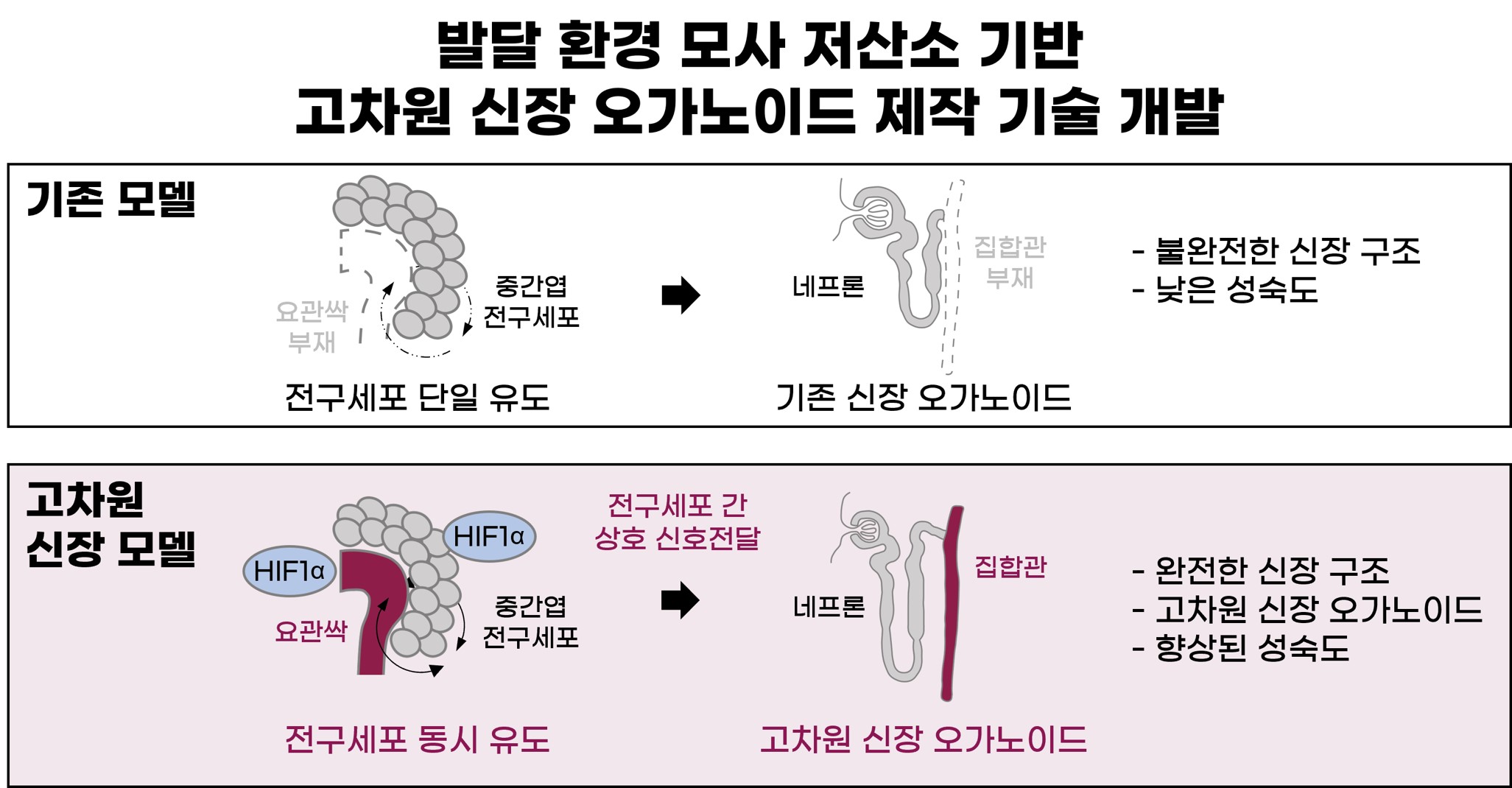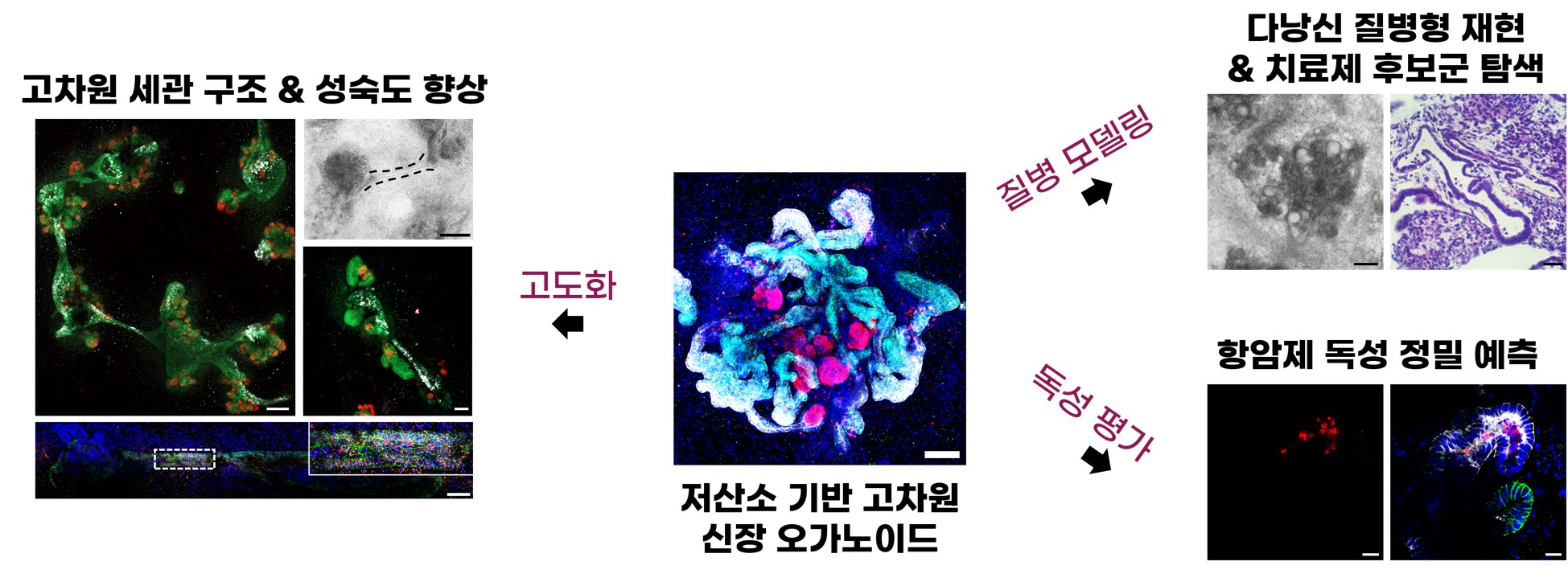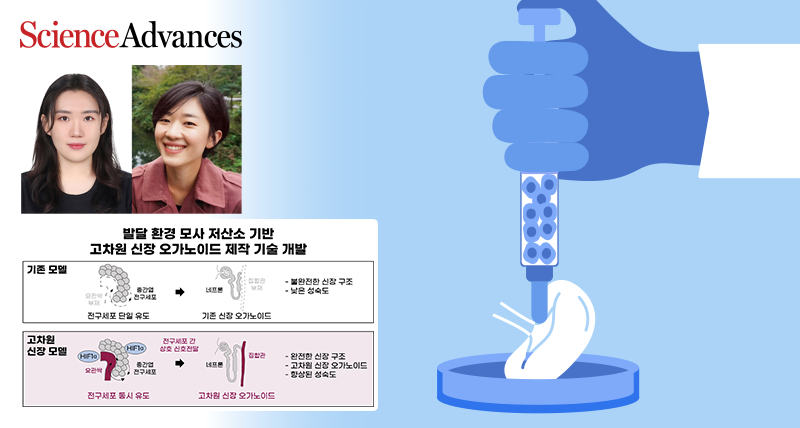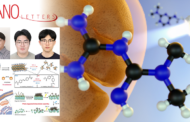A research team affiliated with UNIST has developed an artificial kidney organoid that, for the first time, incorporates the kidney’s connecting tubules—structures previously absent from laboratory-grown models—with remarkable fidelity. By mimicking the low-oxygen environment of early embryonic development, the team successfully guided stem cells to form more mature and structurally accurate miniature kidneys. The study was led by Professor Tae-Eun Park in the Department of Biomedical Engineering at UNIST and Professor Dong Sung Kim from the Department of Mechanical Engineering at POSTECH.
The human kidney is composed of about one million nephrons, each acting as a filtration unit. These nephrons connect to collecting ducts through tiny tubules that channel waste out of the body. Until now, laboratory-grown organoids lacked this essential connection, and their cells were too underdeveloped to fully replicate real kidney functions.

Mimicking the low-oxygen environment of early embryonic development, the team guided stem cells to develop into more mature and structurally accurate miniature kidneys.
The research team overcame these limitations by recreating the hypoxic conditions present during early kidney development. This approach prompted induced pluripotent stem cells to differentiate not only into nephron cells but also into precursor cells that form connecting tubules. These two cell types then engaged in reciprocal signaling, driving their growth and organization into complex networks that closely resemble natural kidney tissue. Single-cell genomic analysis confirmed that the resulting organoids displayed cell compositions and maturity levels highly similar to those of actual human kidneys.

Figure 2. Potential applications of kidney organoids.
The new organoids demonstrated significant potential for disease modeling and drug testing. For example, they successfully recapitulated polycystic kidney disease, with cysts forming throughout the tubular structures. Additionally, the organoids showed heightened sensitivity to nephrotoxic drugs, outperforming previous models in detecting drug-induced kidney toxicity.
Professor Park commented, “By mimicking the developmental environment, we created a mini kidney that closely replicates both the structure and function of natural tissue. This advancement provides a robust platform for testing potential treatments and predicting drug toxicity, bringing us closer to replacing animal models with human-derived organoids.”
This research was led by first author Hyeonji Lim of UNIST and supported by the National Research Foundation of Korea (NRF), the Ministry of Science and ICT (MSIT), the Advanced Research Projects Agency for Health (ARPA-H) Project of the Ministry of Health and Welfare (MOHW), the Industrial Technology Alchemist Project of the Ministry of Trade, Industry and Energy (MOTIE), and UNIST. The findings were published in Advanced Science on August 21, 2025.
Journal Reference
Hyeonji Lim, Dohui Kim, Haejin Yoon, et al., “Developmental Hypoxia Enhances Kidney Organoid Complexity and Maturity,” Adv. Sci., (2025).












